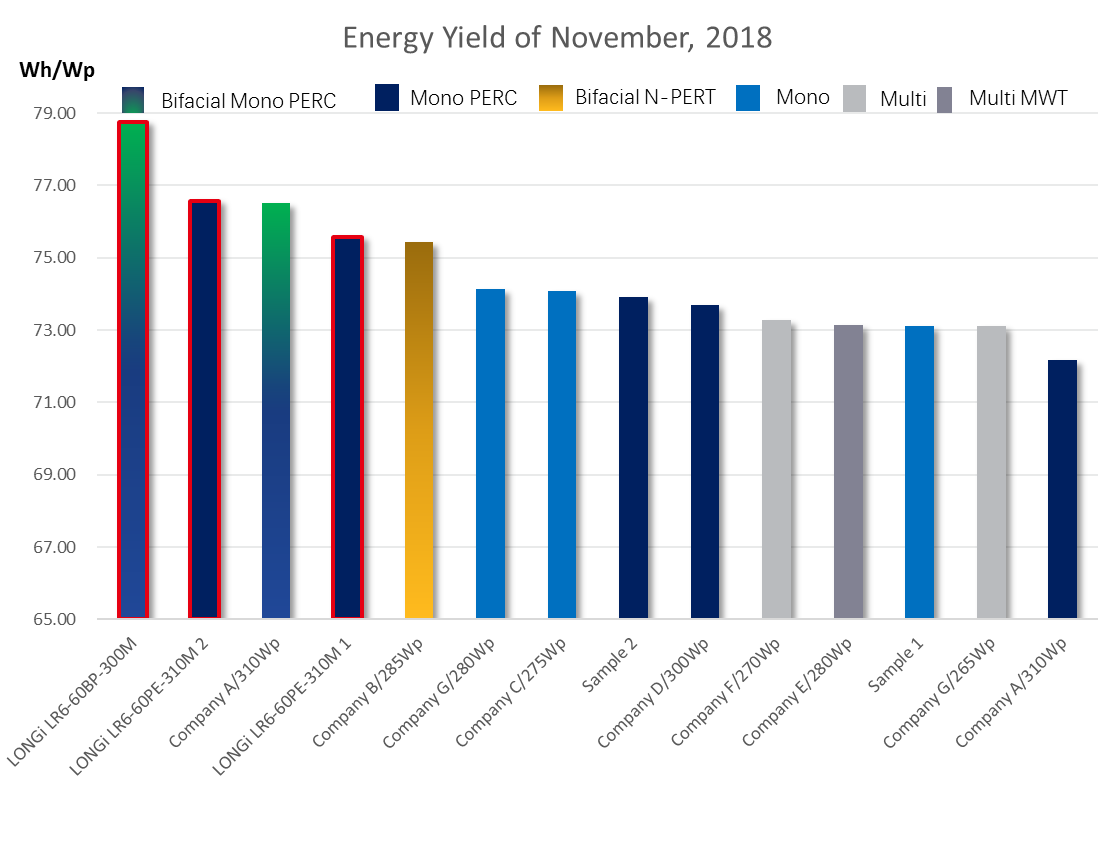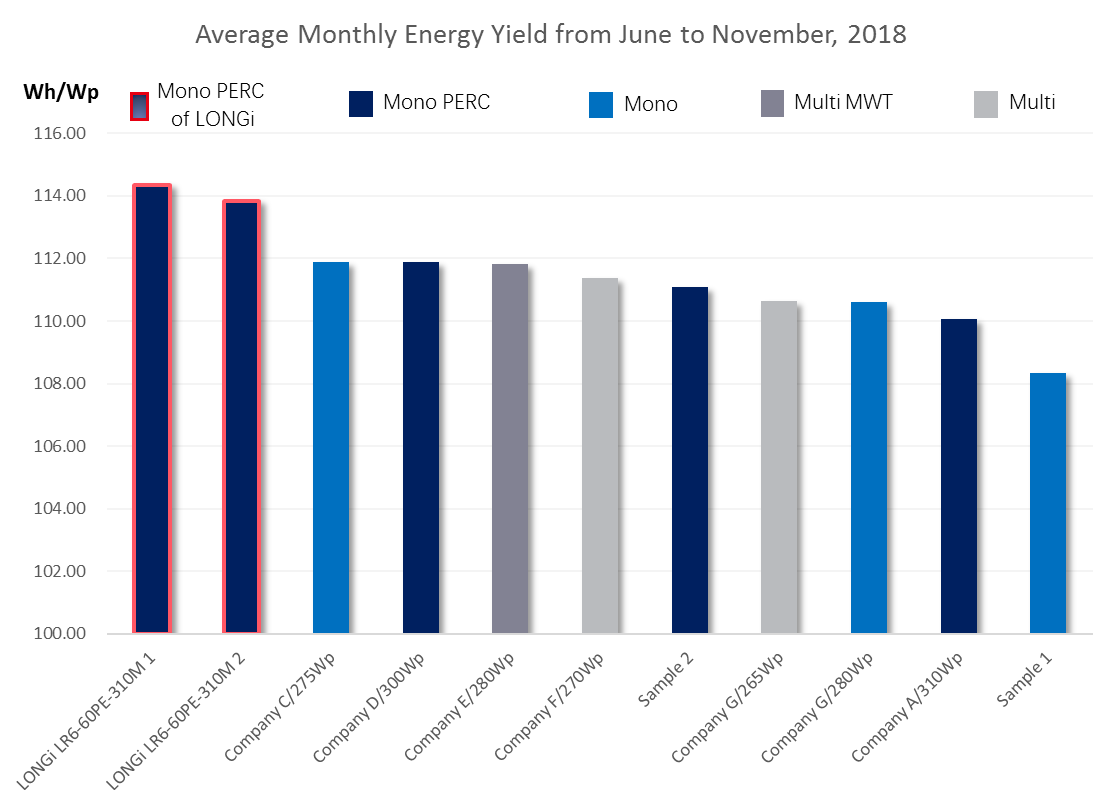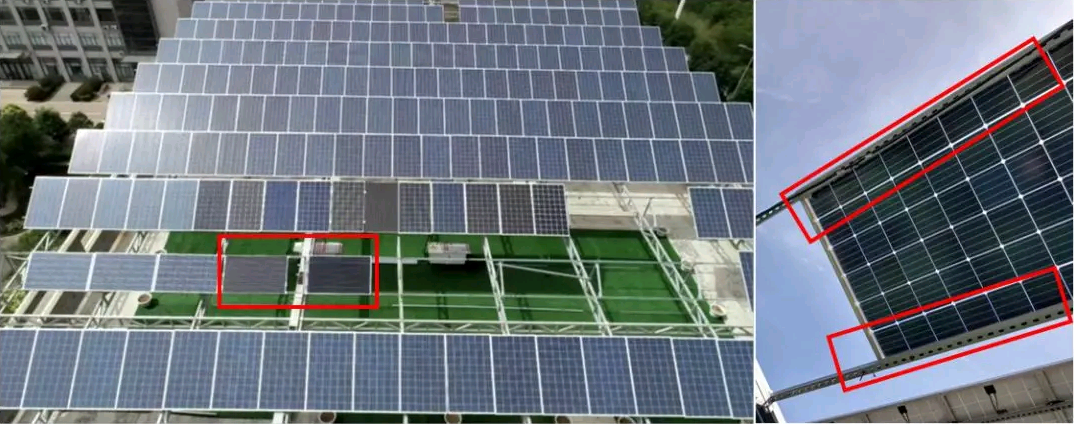German based photovoltaic media PV Magazine presented its latest outdoor test result about energy yield scores of different modules on its magazine version of January 2019. The result shows bifacial PERC module from LONGi ranked No.1 within all the modules tested, and LONGi’s two mono PERC products occupies top 2 in power generation within all the monofacial modules.
The outdoor test started to release test result on monthly PV Magazine from June, 2018. The data of November showed that a bifacial mono PERC module from LONGi which joined the game from October ranked No.1 with an energy yield of 78.71 Wh/Wp. This figure is significantly leading over the second and the others, higher by 3.64% over the other two bifacial modules and averagely 7.27% higher than other monofacial modules. Meanwhile, one of LONGi’s monofacial PERC module recorded even higher energy yield than bifacial modules from other manufacturers. It might be related to the excellent low-irradiance power generation capability of LONGi’s modules (the intensity of illumination in November is significantly lower than that in other months, and the monthly energy yield is ~75Wh/Wp).

Chart #1, energy yield scores of November, 2018
Cumulated data from June to November showed the average energy yield as in below chart, the scores of two LONGi mono PERC modules are higher than other mono modules and module sample #1 and #2 purchased in market, with a higher rate than the mean value by 2.92%. This result reveals the same trend as testing result from other facilities that different cell type impact the power generation capability, however module performance varies greatly within different manufacturers.

Chart #2, Average Monthly Energy Yield from June to November, 2018
The benefit from biface seems lower than expectation, only with the close level to those floating installation using LONGi modules under reasonable conditions, and this is because of two reasons. The first one is due to the lower reflection rate of the artificial turf installed. The second one is because the bracket would block two rows of cells near the long side of the bifacial modules.

The PV Magazine Test is a technical service jointly provided by PV Magazine Group from Germany, CEA from United States and China’s Gsolar. The below diagram shows the entire process. Engineers from CEA will randomly select 5 pieces from 2,000 mass-produced modules, and then firstly test their appearance and electrical performance and EL diagram under STC conditions. After that, a series of test will be done including low irradiance test and temperature coefficient measurement, PID test, LID test and outdoor performance test. (Details of the test please refer to https://www.pv-magazine.com/features/pv-magazine-test/) Previously, LONGi modules have achieved the highest comprehensive score in performance testing.
Other conditions include: all the modules participating the outdoor performance test have been exposed for several weeks to release most of the LID; module energy yield per watt is calculated based on the power after exposure; using measuring device with accuracy of 0.5 to test the DC output performance; going through module-level power optimizer and connecting to string inverter of Huawei. With all these measurements the test can eliminate those uncertainties other tests have and truly report the energy yield capability of the modules and provide valuable reference to PV station investors.
